Not only a clothing accessory, the Pieu scarf is also a thread that extends history, encapsulating the aesthetic beauty, religious beliefs and cultural soul of the Thai people. A small cloth, but enough to hold the depth of culture, imbued with love for the Muong people and carrying the heavy memories of the fertile land in the heart of the Northwest.
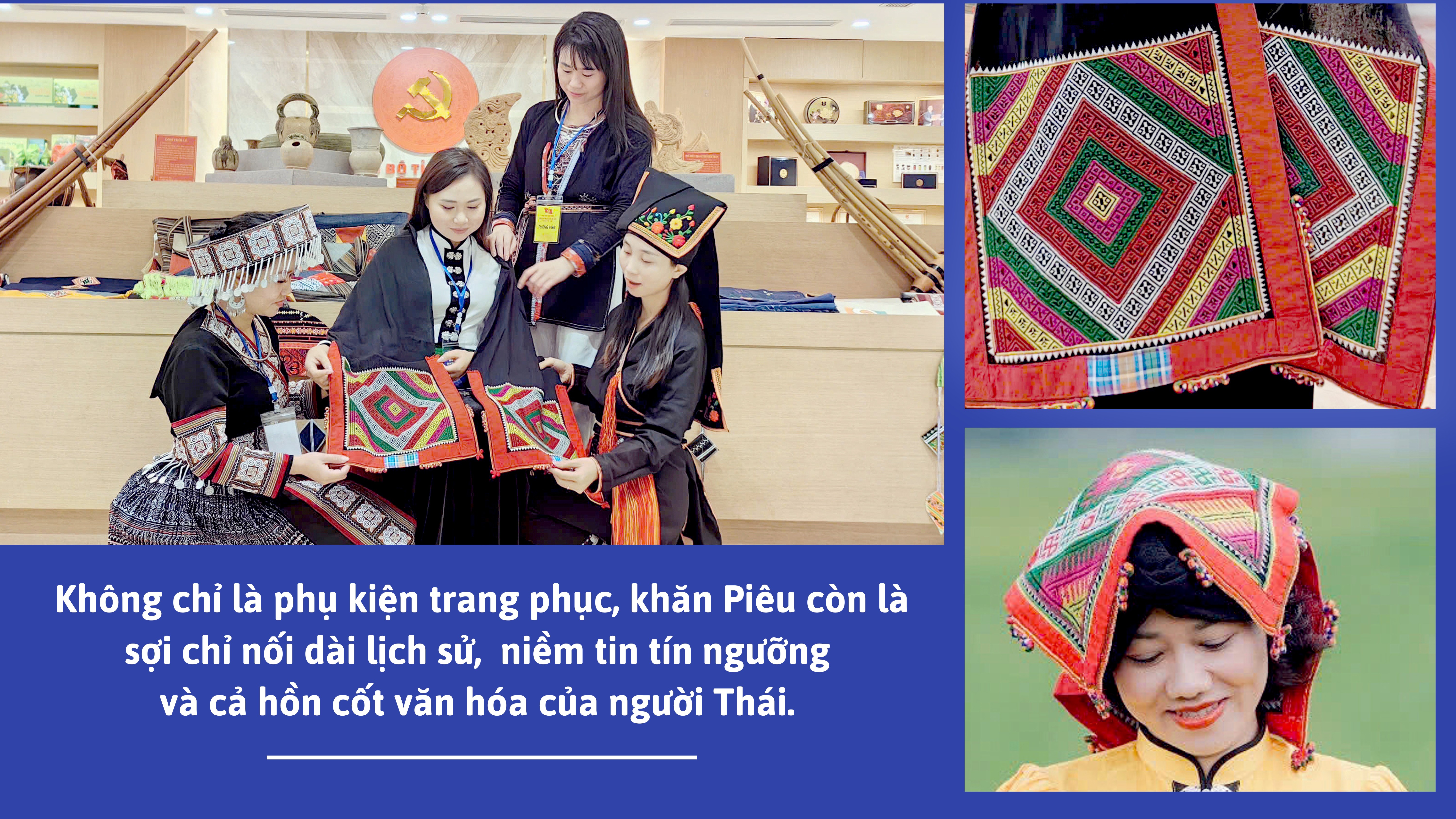
To understand more about the Pieu scarf, I went to Thai villages and met the women who still preserve, weave and embroider the soul of the Northwest mountains and forests every day. “Pieu” in ancient Thai means a head scarf, woven from cotton, dyed indigo and meticulously hand-embroidered. The scarf is usually 30-35 cm wide and 150-200 cm long, depending on the user.
However, what makes the scarf special is not its length, but rather its patterns and the skillful embroidery. One of the most unique techniques is hidden needle embroidery - a method that Black Thai women perform from the back of the scarf, so that the patterns appear on the right side, sharp and sophisticated.
Ms. Dong Thi Thich - a person passionate about preserving and honoring the traditional intangible cultural values of the Thai ethnic group in Duong residential group, Cau Thia ward, slowly told about the embroidery technique preserved through many generations of Black Thai women: Instead of embroidering on the right side as usual, Black Thai women perform the operation from the left side.
This technique does not allow for mechanical imitation, but on the contrary, encourages the embroiderer's subjective creativity. This requires the embroiderer to be skillful, refined, and culturally aware. Because the pattern appears on the right side, but the hand is on the left side. This cannot be learned in a hurry, nor can it be done carelessly. Making a Piêu scarf means embroidering one's memories and national identity into it.
Unlike many popular embroidery forms, the patterns on Piêu scarves are not simply decorative, but a tightly structured system, inspired by life and nature, from blades of grass, flower branches, to birds, mountains and hills... All have symbolic meanings, expressing the Thai people's philosophy of living in harmony with nature.
The two ends of the scarf are the distinctive highlights, with “cut pieu” and “sai peng”. According to the Thai people, “cut pieu” are small, rolled-up cloth knots attached to the ends of the scarf, which can be in pairs, three, five or even a bunch, showing ingenuity and sophistication. “Sai peng” are colored cloth tassels that sway when the young girl dances, like the wind caressing the quiet indigo background.
Each scarf, whether it takes a few weeks or a few months to complete during the off-season, is the crystallization of love, of aspiration, of love songs woven between the highlands.
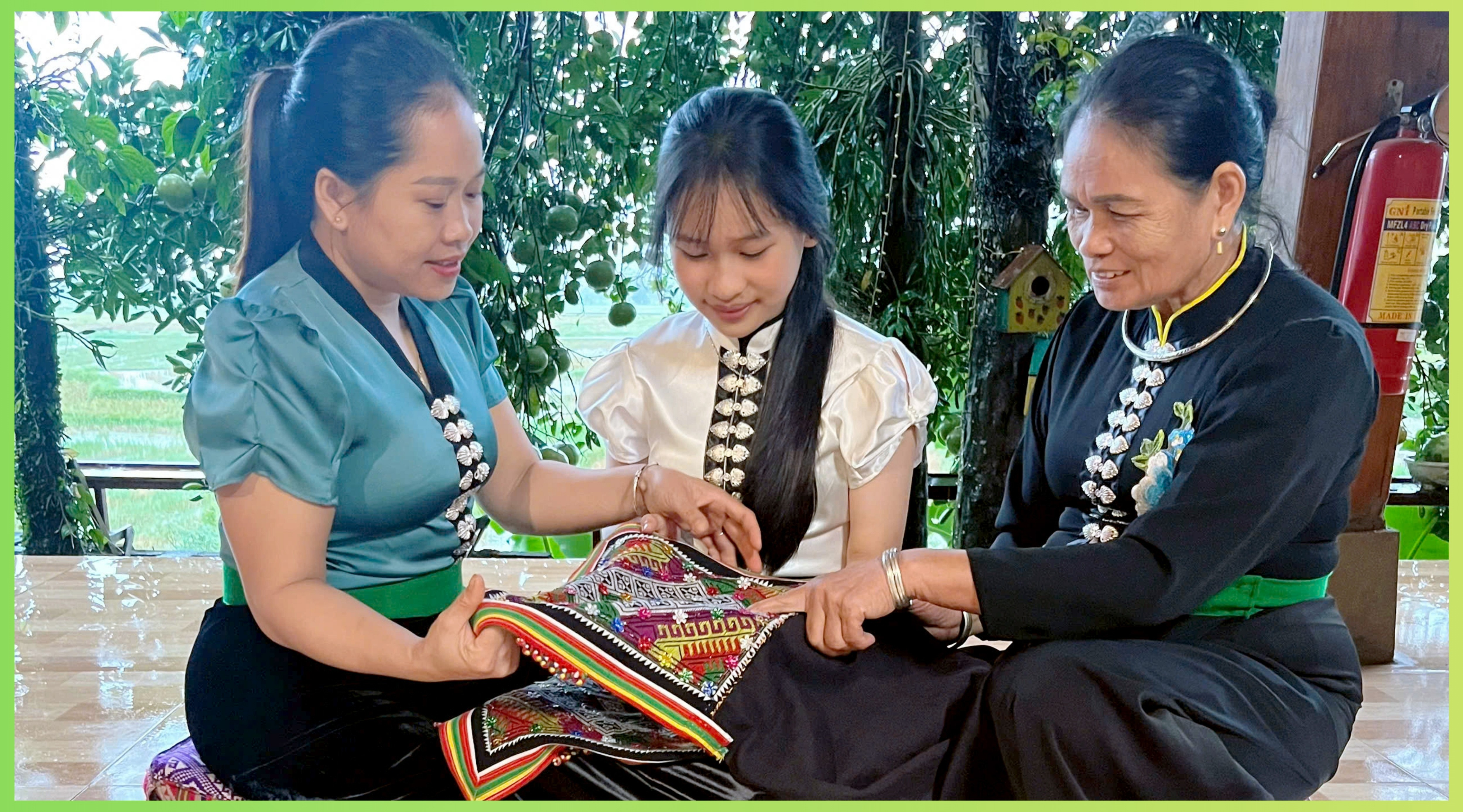
Piêu scarf is not only an item to keep warm and protect from the sun, but also a silent testament to the sophistication and modesty of Thai girls. It is a sacred gift in love, an indispensable souvenir on the wedding day. Before going to her husband's house, Thai girls often prepare from 20 to 30 pieces to give to their parents, brothers, and relatives on their husband's side. The quantity and exquisite beauty of each embroidered cloth is a measure of the diligence, dexterity and heart of the new bride.
According to the old concept, Thai girls can be clumsy in cooking but cannot help but know how to weave brocade and embroider Piêu scarves. That is proof of the imbued "character" of Thai girls - that is patience, delicacy, love for the village and knowing how to preserve traditional beauty.
Then I went to the mothers and grandmothers with gray hair who were diligently keeping the craft alive. There, I saw the sessions of teaching the embroidery craft to the young generation. Patient eyes, soft hands bending each thread, gentle reminders in the cozy stilt house.
Ms. Dieu Thi Xieng, an excellent artisan in Deu 1 residential group, Nghia Lo ward, shared: Teaching scarf embroidery is not just teaching a profession. It is teaching children to preserve the character of Thai girls, teaching them to appreciate their ancestors' heritage. As long as children still love Pieu scarves, our culture will live on.
Sitting next to Mrs. Xieng, Luong Quynh Trang - from Deu 1 residential group, Nghia Lo ward, shyly said: At first, I found it very difficult because I was not used to seeing the back of the face. But my grandmothers and mothers taught me very carefully, now I can embroider. After embroidering the scarf, I feel like I understand my people better and love my village more than before.
In order for the cultural values of the Thai Muong Lo people in general and the Pieu scarf in particular to last forever, the local government has had many specific policies such as: establishing a folk knowledge profile on the Black Thai costume, developing a project to recognize the Pieu scarf as a national intangible cultural heritage, organizing vocational training classes in cultural villages...
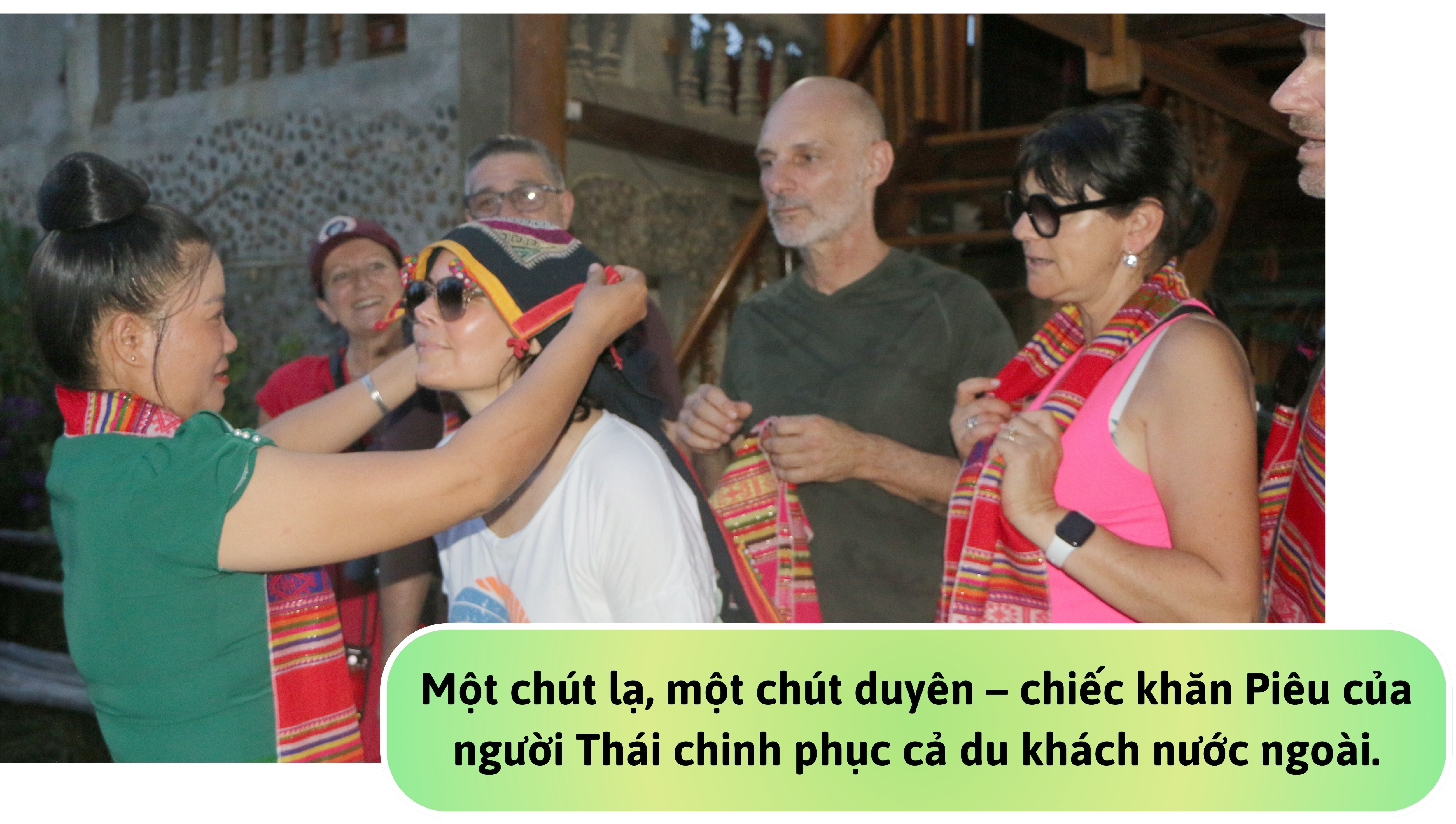
In particular, events such as the Muong Lo Cultural and Tourism Festival and the Northwest Cultural and Tourism Week held annually are opportunities for the Pieu scarf to shine not only in the sparkling xoe dances, but also in the eyes of tourists from all over the world. From the scarf worn on the head during festivals to the handmade souvenirs sought after by tourists, the Pieu scarf is going beyond the village boundaries, becoming a unique cultural product, carrying with it the memories and pride of the Thai people.
Whether worn on the head during festivals, wrapped around the waist during dances or displayed in souvenir shops, the Pieu scarf is still a part of memories, aspirations and love for the Muong people. Thanks to the dedication of artisans and the attention of local authorities, the Pieu scarf, both quiet and brilliant, continues to be preserved and shines like a strong promise of the national soul in the richly-identified land of Muong Lo.
Source: https://baolaocai.vn/sac-mau-khan-pieu-post883826.html













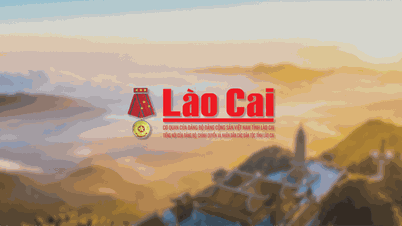
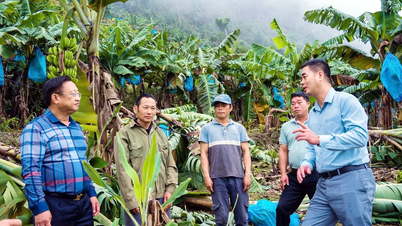
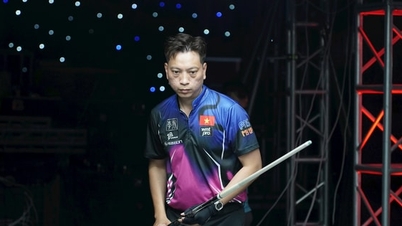

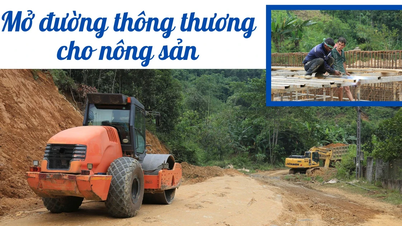




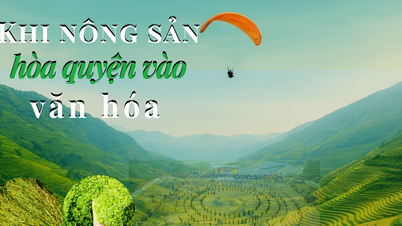
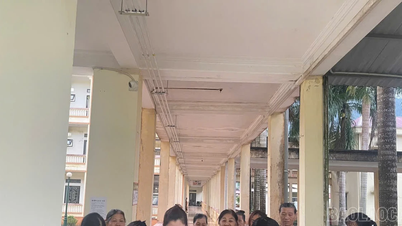

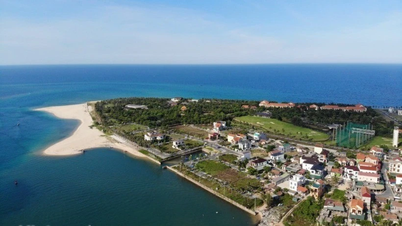
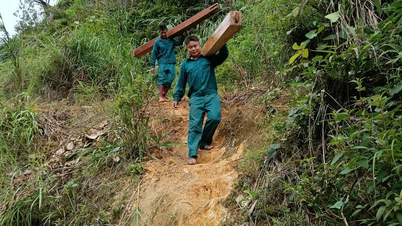
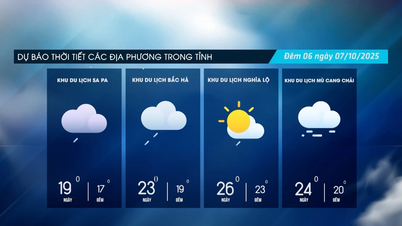























































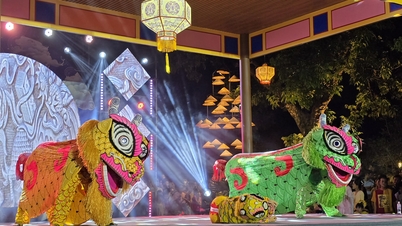












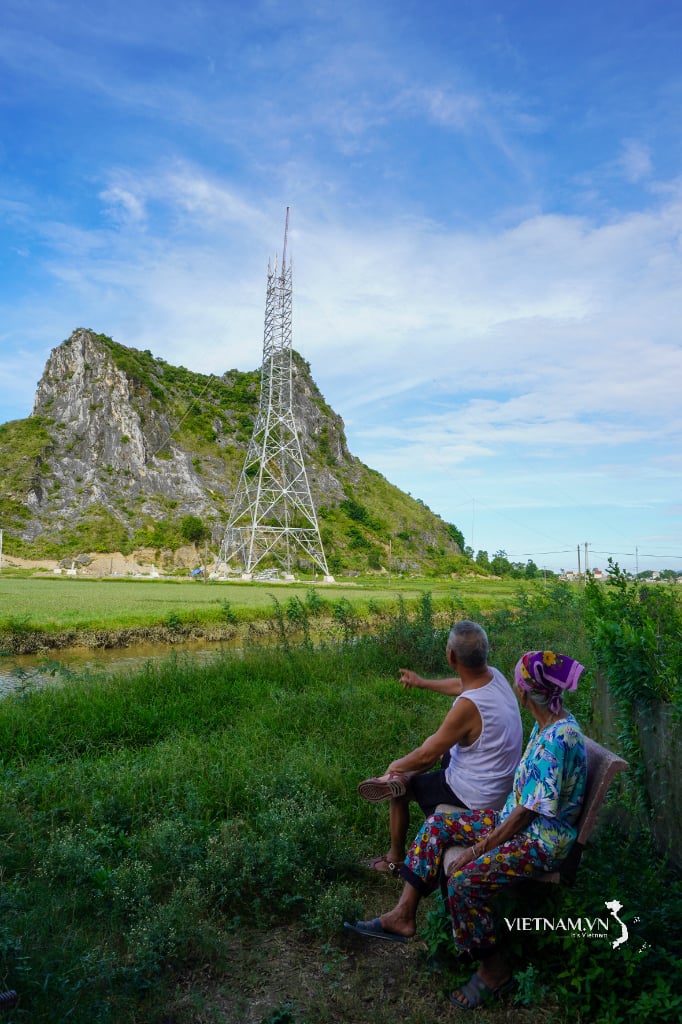

Comment (0)